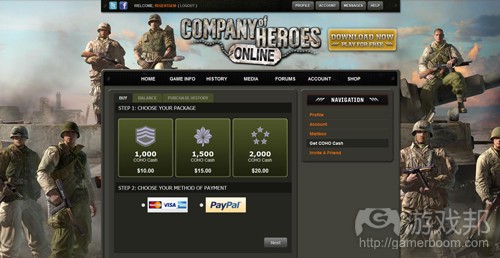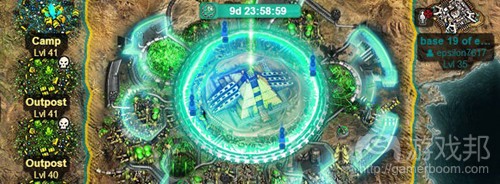分析三种盈利设计术语的定义及区别
作者:Ramin Shokrizade
汽车和电脑在其发展的头10年中是如此简化,以至于今年的我们很难回顾过去并赞赏其技术发展的飞跃性。与所有技术一样,它们都得益于迭代过程,慢慢顺应联合技术、用户需求以及基础设施的变化。今天汽车和电脑都有一些它们在一二十年前根本不存在的组件。在它们添加到这些产品之前,都必须先得经过斟酌和命名,这样它们才能得到优化并适应不同用途。
今天的盈利设计技术基本上才处于其诞生的头几年。其中概念可能相当复杂,但提到这些概念时我们通常使用“免费增值”、“微交易”和“付费获胜”之类的术语来解释一些本该更难理解的情况。其中的好处就在于,他人也可以在无需展开学术讨论的情况下,了解你的大概意思。
如果有开发者称”我将把游戏中的订阅模式替代成微交易“,我们也都会点头示意我们已经理解他在说什么。但这种简化表达的一个副作用就在于,参与谈话的人通常并不理解他所说的情况究竟发展到哪个阶段。
因此,我打算总结归纳过去4年中自己推敲出来的盈利设计术语。我无法低估统一性的语言对这个领域的重要性,这其中存在的意义并不仅仅是为了便于行业讨论。“订阅vs微交易”这种表达范例的局限性对我们行业造成了危害。游戏盈利方式不只两种,而是无数种,只是我们的想象力和能力有限罢了。
什么是订阅模式?
通常来说,这是一个收费服务循环。在游戏中这往往意味阒你付一次月费,在该月享受全天候的完整游戏体验。更清楚地说,我将此描述为“无限订阅模式”。这种模式的缺陷之多,已经超出了本文所能涵盖的范围。
你游戏中的任何部分都可以用你所设定的循环方式收费,也可以让游戏中的多个模块采用循环方式收费。我将这种有限订阅模式称为“微订阅模式”。你可以用微订阅限制用户获取的内容、时间或任何你所能想到的游戏功能。在产品中提供多种微订阅交易有两个主要优势:
1.可以让用户根据自己的需求获得产品。你总不希望(也无法)自己去预测每个用户的需求是什么。因此使用这种弹性方式可以吸引到更多用户。
2.可以让你继续针对游戏服务收费,维持游戏上线首月之后的收益。
这一结果就是你将尽可能地从每个用户可支配的游戏预算中分得一杯羹。
什么是微交易?
微交易是在你的游戏中以特定价格购买一件物品。这是一种可以多次重复的一次性交易。这个术语使用广泛,几乎已是每次讨论都会出现的字眼。在这里你所出售的内容比你出售本身更重要。所以在此我将讨论非订阅内容交易的定义,以便让你与“微交易”一词划清界线。
虚拟商品销售:Nexon于2001年开始推行微交易虚拟商品销售时,我正好在那家公司担任设计师一职。这一机制有两个重要的动态。道具能否提供竞争优势?如果是,它们就变成了“霸权商品”,这将会给你的盈利机制带来长远的消极影响。
非霸权商品一般是以装饰性或“辅助性”道具的面目出现,在游戏中并不具有明确的竞争优势。这里也存在一些灰色地带,例如具有平衡性但也能给予更多战略性选择(从而为用户提供更多“灵活性”)的道具。
虚拟商品在某些时候,是由开发者以外的实体出售。这种情况下,这一交易过程通常被称为现金转帐(Real Money Transfer,以下简称RMT)销售。
我曾在2011年的《Real Money Transfer Classification》这篇论文中,将RMT划分为三种类型:RMT3是“产业化的黄金农民和卖主”,其中以10年前的IGE公司为代表,这种现象给游戏行业带来了相当大的危害。RMT1是应对这种现象的措施——也就是我们现在所谓的“微交易”。RMT2的问世早于这两者——也就是我所谓的虚拟世界活跃参与者之间的“高手交易”。但已因RMT3和RMT1的出现而濒于绝迹。
暴雪最近试图在《暗黑破坏神3》中通过真钱拍卖行重新引进RMT2以便盈利,但却没有认识到其中的问题。我在这款游戏问世6个月之前就已经描述过这些误区。
如果你出售一款一般通过玩游戏就能赢取的道具,那么你就是在出售游戏目标,这可能破坏你的游戏,并对你的收益产生消极影响。
内容销售:如果你的游戏中有部分内容需要付费才能解锁,那么这就是我所谓的内容销售。可下载内容销售也是同种概念,只是这种术语一般与单人游戏产品有关,并不属于多人在线游戏。
注意玩家在单人游戏中可以通过积分排行榜(一种激励用户的有用方法)与他人战斗,这也会降低霸权商品效应(游戏邦注:即给予玩家玩法优势)。
时间限制:游戏内部的时间可通过时间阀门来分配。时间阀门可避免只是投入了更多时间的玩家超过其他玩家。国际象棋和西洋棋等回合制游戏可以自动满足这一点。只要你移除了所有时间阀门,玩家就有办法通过不吃不睡不上班来赢得游戏,这会对收益造成消极影响。
注意时间阀门并不需要严格使用时间度量。它还可以分配玩家操作。例如,Zynga所有产品都通过能量资源来实现这一点。这是一个使用时间所为控制手段的更可取方式,因为如果现实生活中的事件转移了他们的注意力, 或者他们在键盘前一觉醒来之后,发现游戏时间早就失效,他们就会很恼火。Zynga游戏时间阀门的一大缺点就在于,它可以通过付费彻底跳过这一限制,因此会破坏游戏体验。
而不含时间限制的游戏就像是一家“无限量吃到饱”的自助餐厅。这对于一些喜欢偷工减料的餐厅来说,也许是一个可行做法。但作为游戏开发商,凡是吸引人的内容都无法“偷工减料”。玩家被你的内容填饱之后,还会继续吃个不停,而你创造新内容的速度却赶不上他们消化的节奏。
不受控的时间也能算是一种霸权商品,其中的劣势在于你无法从中盈利。这会让你的游戏在那些手头阔绰的玩家面前降低吸引力。
付费获胜
如果你是通过上述所有方法出售游戏优势,那么你就在从内部破坏游戏。我甚至可以说你的产品根本就不是游戏,最多只能算是一个娱乐产品。如果你制作的是一款玩家之间极具竞争性的游戏,那么你实际上创造的就是一款投注游戏。
投注游戏是指你只要抬高你投的赌注,让竞争对手无法跟注,这样你就赢了。技能和精力在此毫无作用。多数Facebook游戏都属于投注游戏,并且根本没有下注的上限(目前所有的中核及亚洲网页游戏亦是如此)。
有些游戏,类如EA基于《命令与征服》系列的网页游戏,拥有极高的付费上限,因此它们实际上也算投注游戏。这也会对收益产生消极影响。
高级盈利策略
虽然你的“硬核”玩家(游戏邦注:作者在此将平均每天投入两小时,每周至少花费8小时玩游戏的用户定义为硬核玩家)也许是你最主要的目标用户,但未必是最大的付费用户群体。拥有稳定工作,较高收入,较少休闲时间的群体,在有空的时候更很可能购买售价较高的娱乐内容。
在不诉诸霸权商品策略的前提下,针对这些拥有较高预算,相对休闲的用户创造高质量的游戏体验,才应该是盈利设计的终极目标。很显然细分市场的产品会有例外情况,但这些细分产品面临的竞争也会快速增长,导致其净收益快速流失。
优秀设计有无限多种方式,糟糕设计同样如此。关键在于要了解用户,牢记你的设计更改将影响你、玩家和产品之间的关系。(本文为游戏邦/gamerboom.com编译,拒绝任何不保留版权的转载,如需转载请联系:游戏邦)
The Language of Monetization Design
by Ramin Shokrizade
Automobiles and computers were so simplistic in their first 10 years that today we have a hard time looking back and appreciating just what a leap in technology they were at the time. Like all technology, they benefited from the iterative process, slowly adapting to changes in allied technologies, consumer demands, and infrastructure. Today both cars and computers have components in them that did not even have names 10 or 20 years ago. Before they could be added to these products, they had to be thought about and given names so that they then could be optimized and adapted to various uses.
Today the technology of monetization design is literally in its first years of creation. The concepts can be quite complex, but in talking about them we use broad terms like “free-to-play,” “microtransactions,” and “pay-to-win” to explain things that would be difficult to explain in detail. The good of this is that others can have a general idea of what you mean without a long academic discussion.
If a developer says “I am going to replace the subscription in my game with microtransactions,” then we can all nod and pretend we understand what the developer is saying. We can also pretend the developer understands what they are saying. The downside to this simplification is that often no one in the conversation understands what is going on at a level that can be applied to product.
Here, I am going to attempt for the first time to put a majority of the monetization design language I have been developing over the last four years in one short article. All of these terms have been used in my other papers on gameful.org and here on Gamasutra, but never in one place.
I cannot understate the importance of a unified language for this space. Its importance goes beyond intellectual discussion. The whole “subscription vs. microtransaction” paradigm is so limiting that it is crippling our industry. There are not two ways to monetize a game. There are millions, limited only by our imagination and our ability to articulate our ideas to our fellows.
What is a Subscription?
Generally, this is a recurring charge for service. In games, it usually means you pay one fee monthly and get the entire game 24 hours a day, seven days a week. To be clearer, I describe this as the Unlimited Use Subscription Model. The weaknesses of this model are profound, and go beyond the scope of this article.
Any part of your game can be charged for in a recurring fashion, for any duration you set. You can have as many modules of your game as you like charged for in a recurring fashion. I call these limited subscriptions microsubscriptions. Microsubscriptions can be used to gate content access, boosts, time, or any other feature you can think of. There are two primary advantages to offering multiple microsubscriptions in your product:
1.This allows the consumer to tailor your product to their needs. You can’t, and should not, want to try to predict how each consumer will use your game. Make it flexible enough to appeal to the widest possible audience.
2.This allows you to continue charging for your game service, and thus maintains your revenue stream beyond the first month.
The end result is you capture the biggest possible slice of each consumer’s available gaming budget.
What is a Microtransaction?
A microtransaction is the purchase of one “piece” of your game for a set price. It is a one-time transaction that in some cases can be repeated. Used by itself, the term is so broad that it becomes a liability in any discussion. Here “what” you are selling is much more important than the fact that it was purchased piecemeal. So here I will discuss the what of non-subscription content purchases and attempt to wean you off of the term “microtransaction”.
Virtual Goods Sales: Nexon began playing with microtransaction virtual goods sales when I was working for them as a designer in 2001. There are two dynamics that are important here. Do the items provide a competitive advantage? If so they are Supremacy Goods, as defined in my paper of the same name. This can have profoundly negative effects on your monetization efficacy.
Non-supremacy goods generally take the form of cosmetic and “flavor” items that do not provide a clear competitive advantage in a game. There are gray areas that may sell well, like items that are balanced but give more tactical options and thus provide more “flexibility” to the user.
Virtual goods can, in some cases, be sold by entities other than the developer. In these cases the process is often described as a real money transfer (RMT) sale. For a full discussion of these dynamics see my Real Money Transfer Classification paper.
In that 2011 paper, I broke down RMT into three categories. RMT3 is industrial gold farmers and sellers, which were organized almost 10 years ago by a company called IGE that caused considerable harm to our industry. RMT1 was the reaction to this — what we usually now call “microtransactions.” RMT2 is what came before both of these — what I call “expert trades” between active participants in a virtual world. It was essentially wiped out by both RMT3 and RMT1.
Blizzard recently attempted to bring back RMT2 and monetize it using a real money auction house in their Diablo III product, without understanding the involved potential pitfalls. I described these pitfalls six months before anyone got a look at D3 in this paper.
If you sell an item that can normally be earned via gameplay, then you are selling game objectives, and this breaks your game, as described in my Game Monetization Defined paper. This will have negative effects on your revenue generation.
Content Sales: If there is some part of your game that is inaccessible until you pay to unlock it, then I consider this a content sale. DLC sales are exactly the same thing, though usually that term is associated with single player game products, not online multiplayer games.
Note that while players can compete against each other in single player games via leaderboards (a very useful method of motivating your customers), this also reduces the Supremacy Goods effect of selling content that gives players a gameplay advantage.
Please note that for something to be a content sale and not a time gate (see below) it has to allow access to some part of your game that is normally completely inaccessible without payment.
Time Controls: Time in-game can be rationed via time gates. A time gate prevents one player from getting ahead of another player just because they have more time to play. Turn-based games like chess and checkers do this automatically. As soon as you remove all time gates players will be motivated to win your game by not sleeping (or eating, or working, etc.). This has substantial negative effects on revenue generation (a full discussion is beyond the scope of this paper).
Note that a time gate need not strictly use a time metric. It can also ration a player’s actions. Zynga does this in all of its products via the energy resource, as an example. This is a preferable approach to using time itself as the control, as a player will get aggravated if real life draws their attention or they fall asleep at the keyboard and return to find their time has expired. The greatest weakness of the Zynga time gate is that it can be bypassed completely with money, thus breaking it.
A game without a time control is a bit like an “all you can eat” restaurant. This works for some restaurants because they can just keep putting out cheap content forever. As a game developer, very little in the way of attractive content is “cheap.” Once a player has had their fill of your content, they will move on as there is no way you can create content as fast as your gamers can consume it.
Uncontrolled time also acts as a Supremacy Good, with the added disadvantage that you are not being paid for it. This will make your game much less attractive to those players with huge money budgets and small time budgets (your ideal customer).
Pay-to-Win
When you sell game advantage via any of the above methods, you break the game intentionally. I would go so far as to say your product is no longer a game, but just an entertainment product at that point — as described in the aforementioned Game Monetization Defined paper. Further, when you make the game highly competitive between players you create what is in reality an ante game, as described in my How ‘Pay to Win’ Works paper.
An ante game is one where you can win just by raising the ante to the point where your competitors cannot match you. Skill and effort become irrelevant. Most Facebook ante games (currently all mid-core and Asian browser games) have no cap at all.
Some games, like EA’s browser-based iteration of its Command & Conquer franchise, have such high caps that the game still becomes an ante game. This has negative effects on revenue generation, as further detailed in my Supremacy Goods microeconomic model.
Superior Monetization
While your “hardcore” gamers (I define these as playing more than two hours per day on average, and typically eight or more hours on at least one day per week) may be your most vocal, they are not necessarily your biggest spenders. The person with a job, high income, and very little free time will spend a premium for quality entertainment on those times when she does have time to play.
Creating a game that provides a quality experience for these high-budget, relatively casual players without resorting to Supremacy Goods should be the ultimate goal of a well crafted monetization design. Obviously exceptions will occur in the case of niche products, but those niches can get crowded very quickly, leading to rapid loss of positive net income.
Just as there are almost infinite ways to craft said design, there are also just as many ways to really foul up your design. The key is to know your consumer, and how any change you make to your design will affect the relationship between you, them, and your product.(source:gamasutra)









































 闽公网安备35020302001549号
闽公网安备35020302001549号